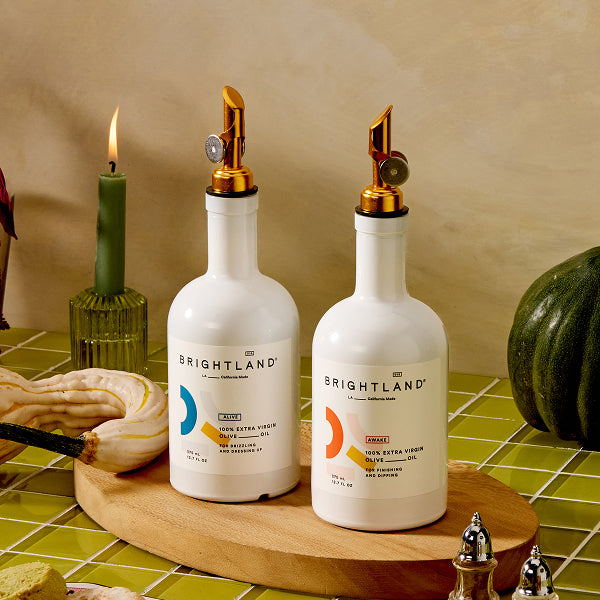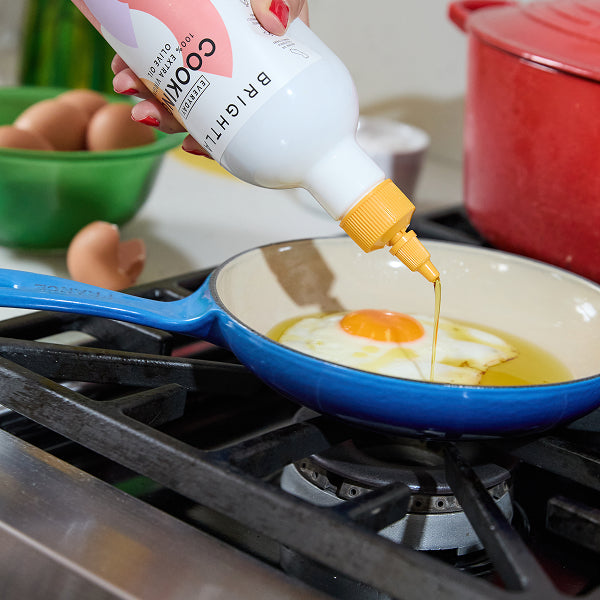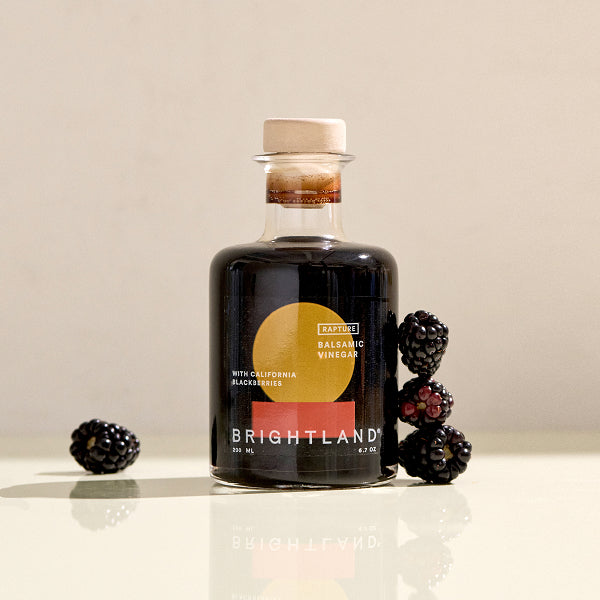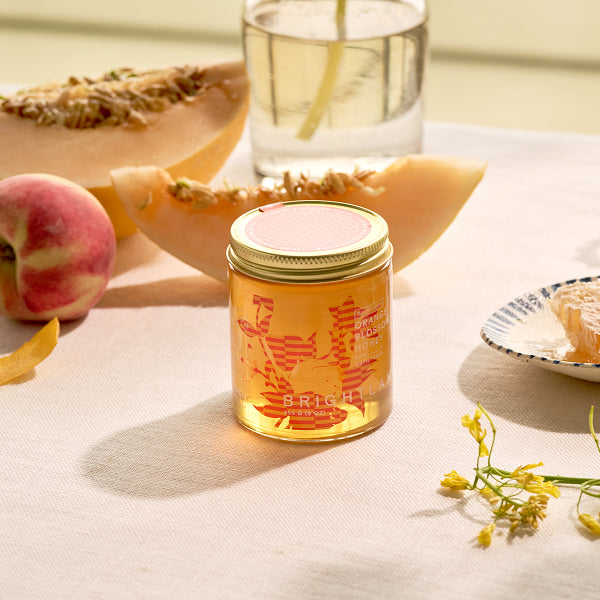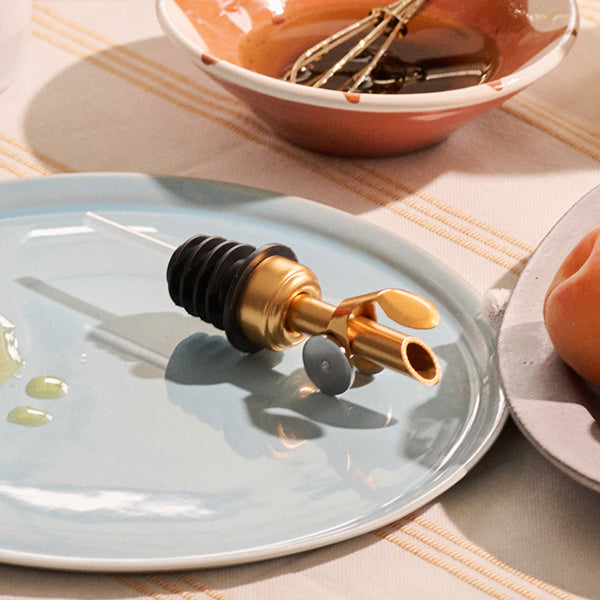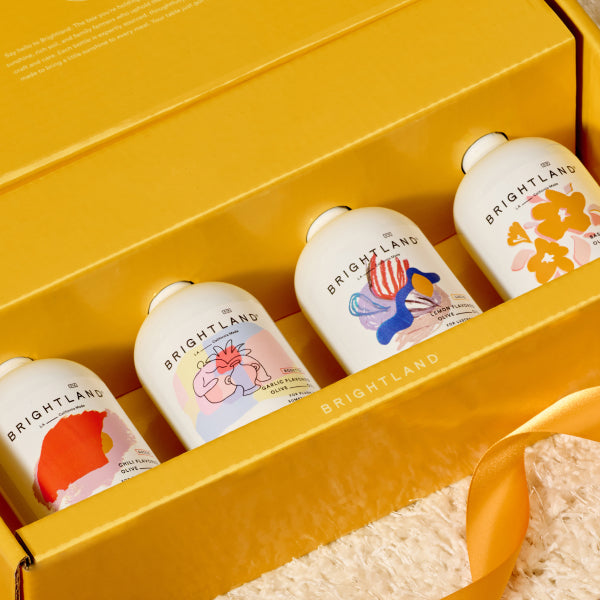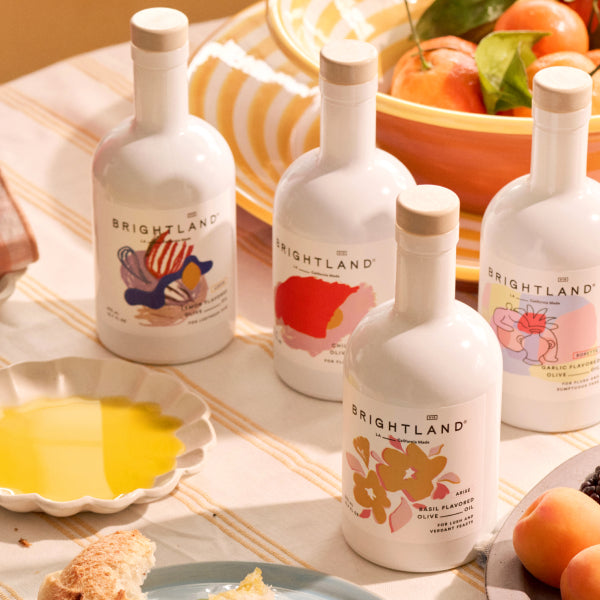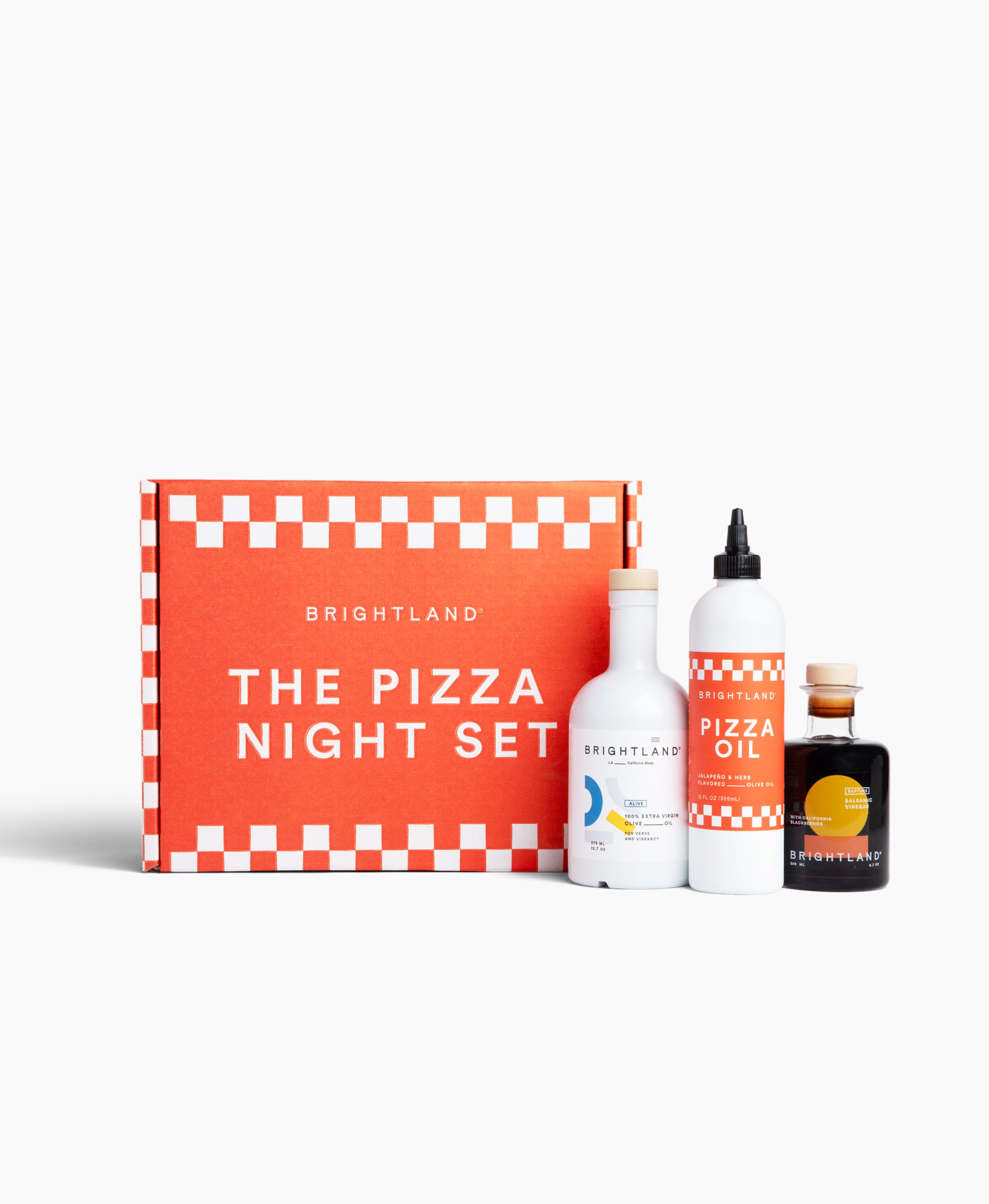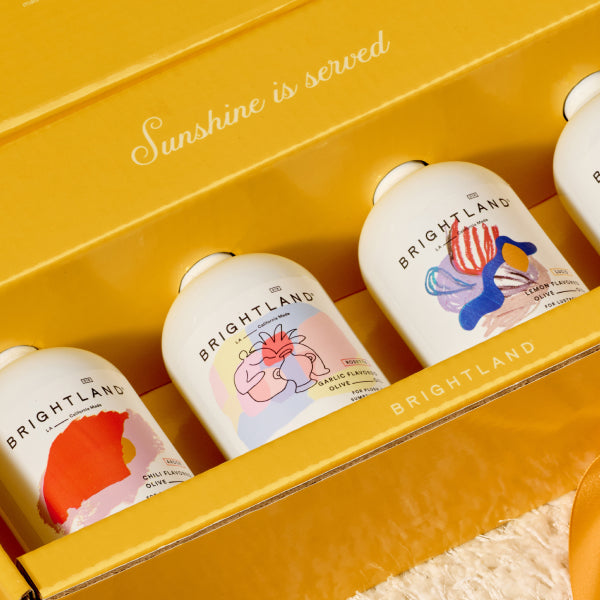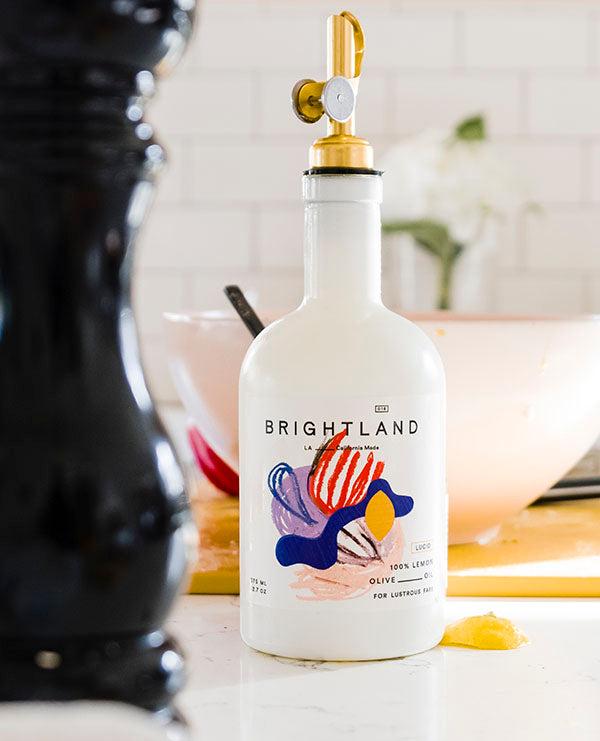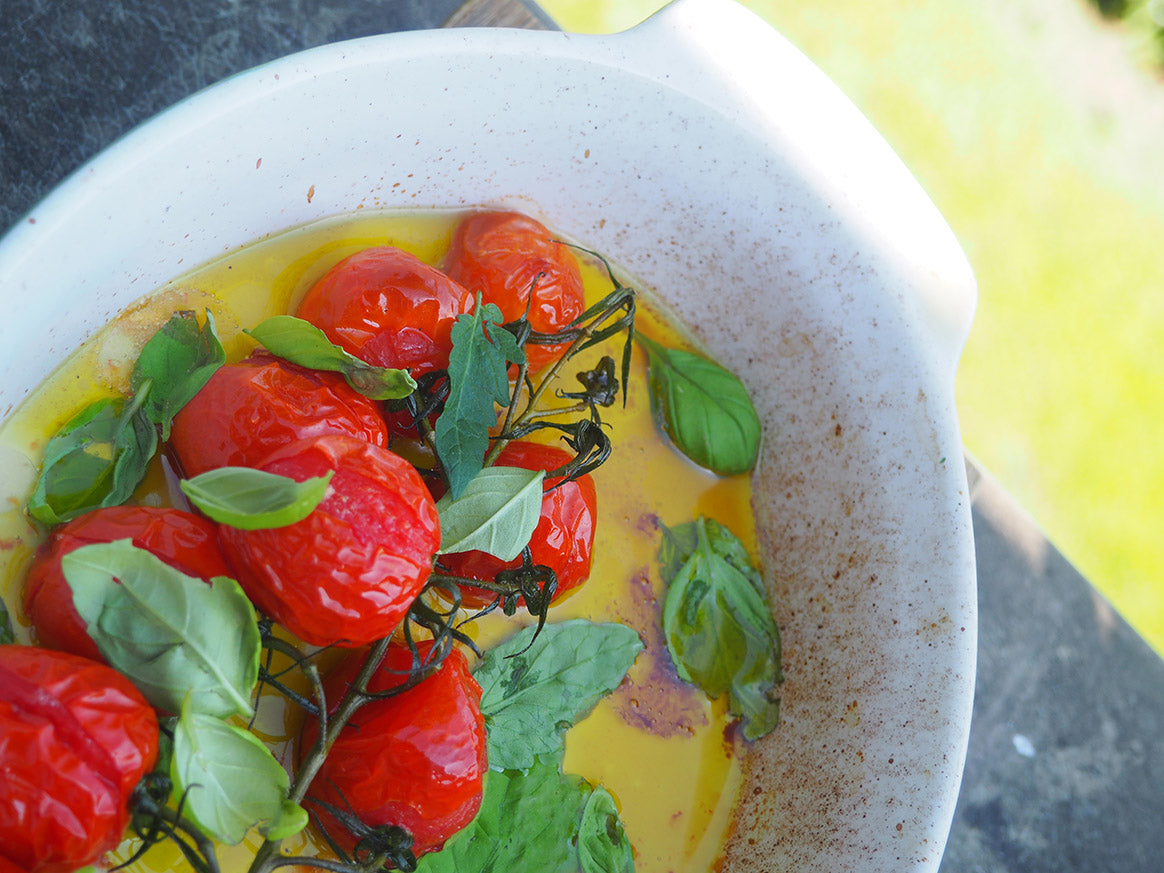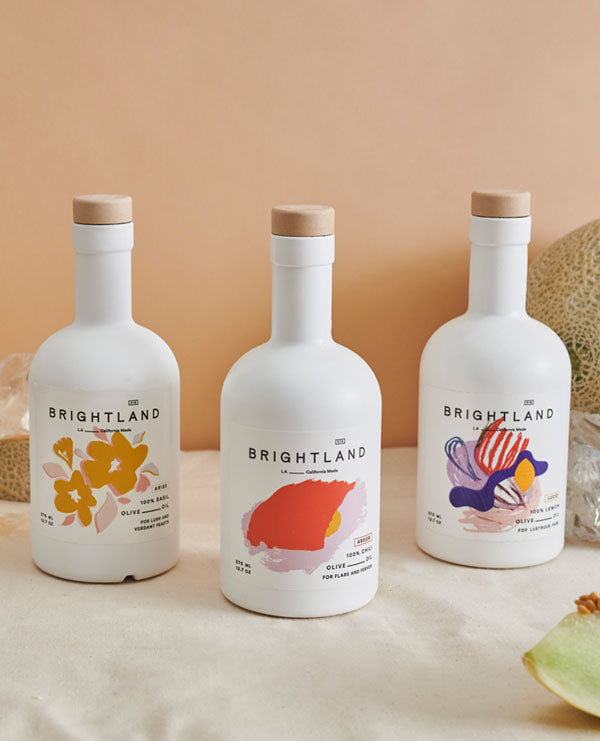[open type="rte"]

Stocking a pantry from scratch can be incredibly intimidating. Whether you have just moved across the country or are settling into your very first apartment, filling an entire pantry from scratch requires more items than you might realize. To help you out, we have compiled the ultimate list of pantry staples, sorted by category to make it easy to shop. Start stocking your home kitchen today with this ultimate checklist of pantry staples:
[close type="rte"][open type="rte"]

Oil and Vinegar
- Extra virgin olive oil: Olive oil can be used for everything from making salad dressing from scratch to pan frying meats on the stovetop. If stored properly, it will last between 12 and 18 months. If you cook with olive oil a lot, you may also want to have some flavored olive oils in your pantry to add some variety.
- Vegetable oils: In addition to the olive oil, you will probably want to keep at least one neutral tasting oil in your pantry for baking recipes. You can also add more if you use a lot of oil or bake a lot.
- Cooking spray: This spray is used for greasing pans before baking so that the baked goods do not stick to the pan.
- Balsamic vinegar: A classic vinegar, balsamic has a distinct taste that is smoky yet sweet, making it a great choice for meat marinades and bold dressings.
- Apple cider vinegar: A lighter, fruitier vinegar, apple cider vinegar can also be used for marinades, dressing, sauces and even drinks.
- Red and white wine vinegar: Red wine vinegar has a stronger taste and is more well suited to red meats, while white wine vinegar complements chicken and fish dishes as well as salads.
- Rice vinegar: One of the mildest tasting flavored vinegars, rice vinegar is frequently used in cooking Asian cuisine and is a great addition to add to your pantry.
- Distilled white vinegar: Not to be confused with white wine vinegar, distilled white vinegar is sometimes used in cooking but also has many household cleaning uses.
[close type="rte"][open type="rte"]

Bottled Condiments
- Honey: A healthy, universal sweetener, honey keeps indefinitely when properly stored in the pantry.
- Maple syrup: Another go-to sweetener, maple syrup is vegan-friendly and has many more uses beyond covering your pancakes. Once opened, pure maple syrup needs to be refrigerated to keep it from spoiling. Use it within one year.
- Peanut butter: Peanut butter can be used in sandwiches, baked goods and sauces. Use it within three months once you have opened it.
- Jams and jellies: These can be used in sandwiches, baked goods, sauce and even cocktails. Most fruit preserves need to be stored in the refrigerator after opening. Check the label for specifics.
- Ketchup: Ketchup is used to top burgers and hot dogs, as well as to make homemade sauces. While opened ketchup is shelf stable in the pantry for short periods of time (up to one month), it is a good idea to store it in the fridge at home.
- Mayonnaise: The essential condiment is a staple in sandwiches. Store it in the fridge after opening since it contains eggs.
- Mustard: This versatile condiment is available in a variety of flavors and textures, so if you are a fan of mustard, you may want to keep more than one on hand. Mustard will keep one to two months in the pantry or up to a year in the fridge.
- Barbecue sauce: If you grill out, then you need to keep a bottle of barbecue sauce on hand. Like ketchup, barbecue sauce will keep in the pantry for up to one month, but if you go through it slower than that, you should keep it in the fridge to prolong its shelf life.
- Worcestershire sauce: This classic flavoring agent is often used in marinades and sauces and can be kept in the pantry after opening.
- Soy sauce: This essential Asian sauce will last up to a year after opening in the pantry (and two to three years unopened).
- Salsa: Salsa is a quick and healthy way to add a kick to any dish, especially Mexican and Tex-Mex cuisine. Store it in the fridge after opening.
- Salad dressing: Salad dressings add instant flavor to salads and pasta. Keep several different flavors on hand for variety and refrigerate after opening.
[close type="rte"][open type="rte"]
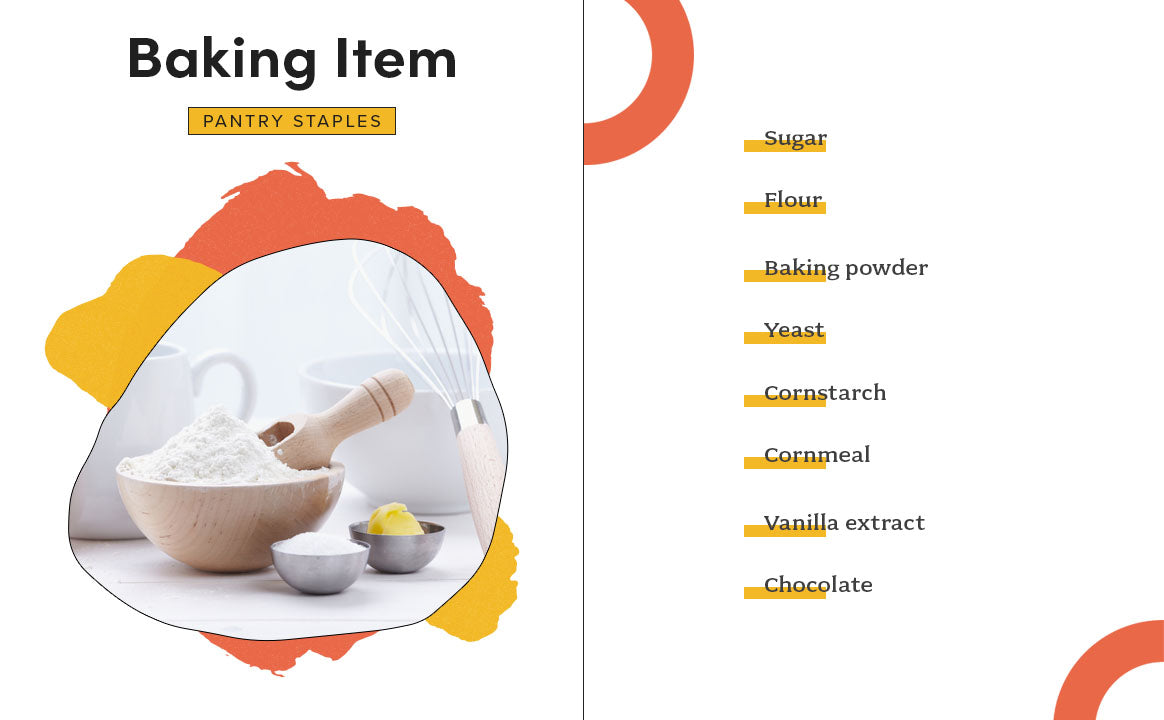
Baking Items
- Flour: Every pantry should have at least one bag of unbleached all-purpose flour (not bleached!). If you bake often, then you will want to keep additional flours on hand, such as whole wheat flour, pastry flour, cake flour, gluten-free flours, etc.
- Sugar: Keep both white and brown sugars on hand even if you do not bake often, as these are pantry staples. If you do bake a lot, you will also want to keep confectioner’s sugar (aka powdered sugar) in your pantry as well.
- Baking powder and baking soda: These are used to add leavening in recipes that do not call for yeast. Mark the date and use them up within six months. Baking soda also has many cleaning applications, so you may wish to keep one box on hand for baking and one for household use.
- Yeast: Yeast is the go-to leavening agent for bread recipes. Either get the single-use foil packets that you can leave in the pantry or store the jar in the fridge after opening and use it within four to six months.
- Cornstarch: Used to thicken sauces and broths, cornstarch will keep indefinitely when stored in an airtight, opaque container.
- Cornmeal: Cornmeal can be used to dust surfaces and bread items for frying. It will keep up to a year in an airtight container.
- Vanilla extract: While this go-to flavoring agent has an indefinite shelf life, you will probably find yourself going through bottles quickly because so many recipes call for it.
- Chocolate: If you bake, it is a good idea to keep a variety of chocolate on hand, including semi-sweet chocolate chips, cocoa powder and chocolate baking bars.
[close type="rte"][open type="rte"]

Canned and Dry Goods
- Pasta: Store several types of pasta in your pantry so you are always ready for an impromptu Italian night. If you do not use up the whole box at once, transfer the rest to an airtight container and put it back in the pantry.
- Oats: Oats are a healthy, hearty breakfast that get your day off to a good start. Plain oatmeal lasts for at least a year in the pantry when stored correctly.
- Rice: Brown rice lasts about six months if kept in an airtight container, while white rice can last up to two years. If you love rice and eat it often, you might want to keep other types in your pantry as well.
- Crackers and chips: These tasty snacks go stale quickly, so store them in airtight containers and try to eat them up soon after opening the package.
- Beans: Both canned and dry beans last for several years when properly stored. Both black beans and chickpeas are staples to keep in your pantry, and you may wish to stock other types of beans as well, depending on your preferences.
- Tomatoes: Different types of canned tomatoes can be used in different dishes, so try keeping a mix in your pantry (i.e., diced tomatoes, tomato paste, tomato sauce). Because of the high acid content, canned tomatoes usually taste the best if eaten within 18-24 months of purchase.
- Broth, stock and/or bouillon: These pantry staples make cooking soup a breeze. In many cases, they do need to be refrigerated after opening if you do not use them all up, so check the label before sticking an opened package back in the pantry.
- Tuna: If you eat meat, it is a good idea to keep this shelf-stable protein in your pantry. Tuna can quickly be turned into all sorts of meals on the fly when you are hungry and do not have time to go grocery shopping.
- Nuts: Nuts are a healthy snack and a common baking ingredient. Popular choices include peanuts, cashews, walnuts, hazelnuts, almonds and more. Store them in airtight containers and they will keep for up to six or 12 months.
- Dried fruits: Another healthy snack and common baking ingredient, dried fruits are another pantry staple. Like nuts, dried fruits will last for up to six or 12 months when stored the right way.
- Breadcrumbs: Breadcrumbs are a versatile topping that help add texture and flavor to dishes. If stored away from moisture in an airtight container, they can last up to six months in the pantry.
- Coffee and tea: If you are a coffee and/or tea drinker, then you should absolutely keep these in your pantry. Store in airtight containers for the best results.
- Vegetables: Some vegetables can be stored in your pantry, if you have room after stocking all these other staples. Examples of produce that can be stored at room temperature include potatoes, onions and garlic.
[close type="rte"][open type="rte"]

Spices and Herbs
- Salt: An essential cooking ingredient, you should have both fine-grained table salt and coarse-grained sea salt for various cooking uses.
- Pepper: Another go-to spice, you can buy pepper either pre-ground or as whole black peppercorns that you grind yourself in a pepper mill as needed.
- Herbs: Basil, oregano, parsley, sage and thyme will cover the bases for most European recipes. You can also add in other spices such as rosemary, dill, fennel, etc. if you tend to cook a lot with dried herbs.
- Sweet spices: These spices are often used in baking recipes but have other uses as well. Cinnamon is a must, and you may also want to keep nutmeg, ginger, allspice and other similar spices in your pantry as well.
- Savory spices: These spices can make or break soups and other dishes. Garlic powder or salt, onion powder, paprika, cumin, cayenne pepper and red pepper flakes are all staples that every pantry should have. You might also wish to add some others, such as dried bay leaves and mustard seeds, if you cook a lot at home.
Make sure to bookmark this page on your phone so you can reference it the next time you are at the grocery store. If shopping online is more your style, then you can order extra virgin olive oil right here on Brightland’s website. Browse our olive oils individually or order our olive oil set to sample our two most popular products at once!
Image Credits
marukopum/Shutterstock.com
shine.graphics/Shutterstock.com
Cibusphoto/Shutterstock.com
stockcreations/Shutterstock.com
Anna_Pustynnikova/Shutterstock.com[close type="rte"]

